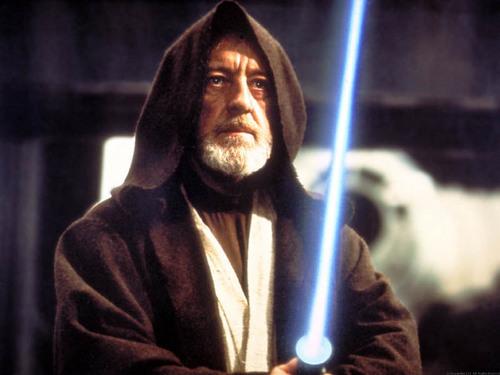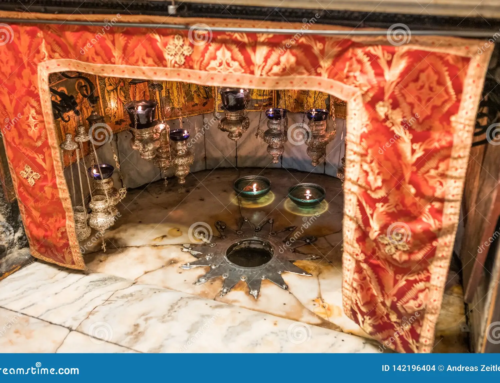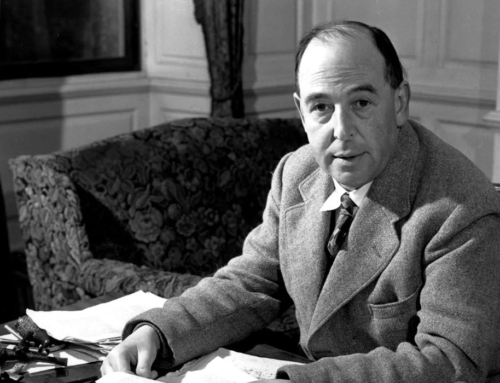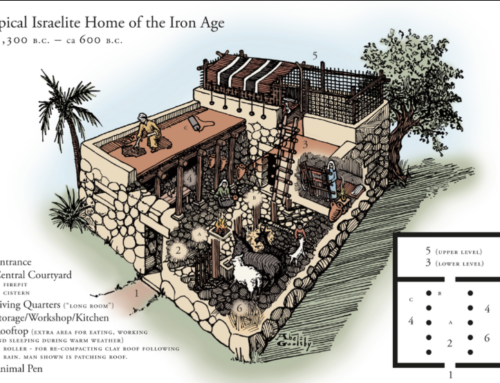Obi Wan was the first and best one. Monks in Star Wars that is.
Alec Guiness captured the essence of the monk perfectly, and I dare say he did so because he used to make his annual retreat at Quarr Abbey on the Isle of Wight. I spotted him there once, but daren’t break his silence by talking to him.
The Jedi are knights, but they are also monks. Connecting with the warrior monks of Eastern religions, they also connect with the religious orders of knights in medieval Christendom.
The Jedi clearly remind of the spiritual truths of the New Testament where St Paul says “We wrestle not agents flesh and blood, but against spiritual wickedness in high places.” Throughout the Star Wars saga it is made clear that beneath all the swordplay and swooping starships a spiritual struggle is taking place. The “dark side” and the “light side” of the force are in conflict.
The chemistry of movies means that as the heroes are swept up into the military battle we participate with them, and as we do so, we also sign up to the spiritual battle. We come out of the film showing realizing at the depth of our imagination that there is such a thing as good and evil and that a battle is taking place between them and that we must decide on which side we will fight.
Yes, yes, I realize that the theology of Star Wars is dodgy. The Star Wars theology is dualistic and pantheistic. “The Force” is an impersonal power in the universe which can be positive or negative. The monks are for the good side. The monsters for the bad side.
As such, the theology is defective not in being totally wrong, but in being a subordinate or lesser theology. Like all heresy, it is not totally untrue. It is half true. It is a primitive and basic theological understanding rather than one which is more highly developed as in the fully incarnational theology of Christianity.
Nevertheless, the monsters and monks of Star Wars are a reminder to all of us that there is a battle between good and evil and that each one of us are participants in the conflict.
I love the fact that Luke Skywalker’s Jedi hermitage is situated on Skellig Michael–the ancient Irish monastery. Celtic monasticism was deeply linked with the earth mysteries and the ebb and flow of the sea, the wind, the sky and the stars.
What also interests me is the way popular culture often reflects the trends and surges in society. Will the present subjective, relativistic anarchy in our society produce a new wave of monasticism? After decades of materialism will we at last start to look within? After decades of bloated decadence and self indulgence will there will be a groundswell towards self discipline, devotion and asceticism? After decades of atheism and denial of God will we at last begin to search for him again? After decades of religious legalism, codification and theological argumentation will we begin again to look more deeply into spirituality and turn once again to a civilization rooted in prayer and the search for God?
My recent visit to Clear Creek monastery and my visit to the monks of Norcia give cause for hope. I also hear that other Benedictine monasteries are experiencing a surge in vocations, and that the young monks are traditional in spirit.
They want to be warrior monks.
So do I in my own way.







“They show that the work of the law is written on their hearts, while their conscience also bears witness, and their conflicting thoughts accuse or even excuse them” Romans 2:15
Much has been written about the mythology of Lucas’ original Star Wars trilogy. God’s law being written into every human heart, primes us to understand that the Sophia Perennis, the perennial philosophy, must show up in classic tales from ancient days to the present. And so naturally the original films, despite their deficient theology, spoke to us. Alas, no more. Enormous good will existed among fans after “Rogue One” and Episode 7. The disastrous non-story of Episode 8 unfortunately means the end of Star Wars for a number of fans my age who grew up with it.